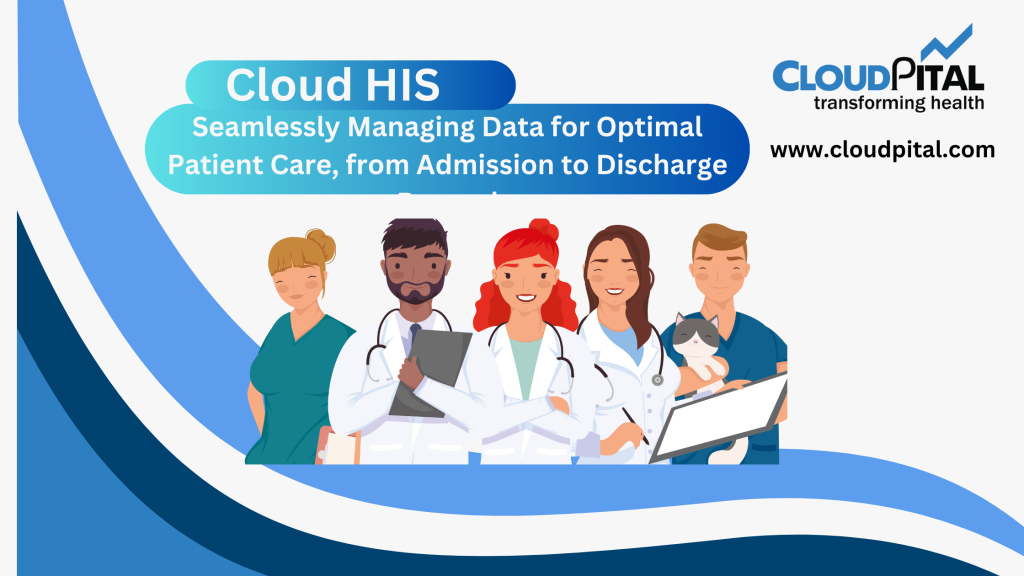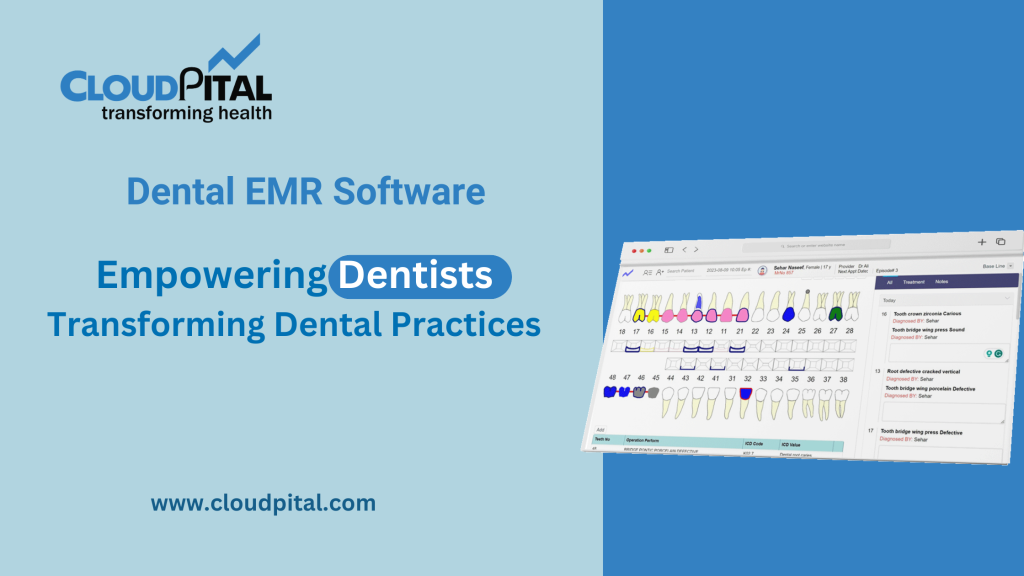Cloudpital # 1 is one of the top HIS The core of this revolution is the Hospital Information System (HIS)—an efficient, integrated system that optimizes hospital workflow and improves patient care. One of the most critical features of an advanced HIS is its seamless integration with other important systems, particularly laboratory and pharmacy modules.
Effective communication is necessary among labs, pharmacies, and clinical departments to provide prompt, accurate, and safe healthcare services. HIS integration with lab and pharmacy systems not only enhances operational efficiency but also improves clinical outcomes, minimizes errors, and enhances patient satisfaction.
Click to Start Whatsapp Chatbot with Sales
Mobile: +966547315697
Email: sales@bilytica.com
Cloudpital # 1 HIS

Understanding HIS Integration
HIS is a centralized system that is meant to handle the clinical, administrative, financial, and operational functions of a hospital. Integration refers to the fact that HIS can interact well with other software packages or modules, including Laboratory Information Systems (LIS) and Pharmacy Information Systems (PIS), enabling automatic data exchange and real-time updates.
Instead of operating as stand-alone silos, these systems are integrated to give one comprehensive picture of the patient’s experience—from diagnosis through treatment to medication management.
Why Lab and Pharmacy Integration is Important
In a hospital setting, miscommunications or delays between lab and pharmacy can have a direct impact on patient outcomes. Integration ensures that:
- Lab results are communicated to clinicians more quickly and with fewer manual handoffs
- Medications are accurately prescribed, dispensed, and tracked
- Duplications, transcription errors, and data entry problems are reduced
- Inventory is automatically replenished as medications are dispensed
Billing is correctly generated based on services provided
Without integration, hospitals tend to experience inefficiencies, errors, and compliance issues that can undermine care quality and safety.
- HIS and Laboratory Information System (LIS) Integration
- What Is a Laboratory Information System (LIS)?
A Laboratory Information System is software that pathology and diagnostic laboratories use to handle and automate lab test orders, tracking of samples, result entry, analysis, and reporting.
How HIS Integrates with LIS:
When HIS integrates with LIS, it facilitates automatic communication between clinical and laboratory departments. Here’s how it is done:
Test Orders: Doctors order lab tests directly within HIS. The orders get sent automatically to LIS without using paper requisitions.
Sample Management: When the order is received by the lab, LIS generates barcodes for samples for identification and tracking, and processes them accordingly.
Result Updates: Results after analysis get uploaded by the lab technicians within the LIS, which get automatically synced back into the HIS and appended to the patient’s EMR (Electronic Medical Record).
Alerts & Notifications: HIS can be programmed to give alerts for aberrant results so that the physicians respond in time.
Billing: Lab test-related charges are auto-populated within the billing system without human intervention.
Advantages of HIS-LIS Integration:
- Reduced test result turnaround time
- Increased accuracy of data and reduced manual duplication
- Real-time lab data-supported clinician decision-making
- Smoother lab-to-clinical workflow
- Improved patient safety through timely diagnostics

HIS and Pharmacy Information System (PIS) Integration
What Is a Pharmacy Information System?
A Pharmacy Information System is a software application used to manage the medication lifecycle within a hospital—from prescription to dispensing to tracking inventory.
How HIS Integrates with PIS:
When EMR Systems is integrated with a PIS, it seals the loop between the patient, pharmacist, and clinician. This is how a typical workflow looks:
Prescription Orders: Physicians prescribe medicines inside HIS during patient consultations or after lab test results are reviewed.
Electronic Transmission: Prescriptions are transmitted in real time to the PIS of the hospital pharmacy.
Pharmacist Verification: Pharmacists check and dispense drugs while ensuring there are no errors in dosages or drug interactions.
Inventory Update: When drugs are dispensed, the pharmacy system automatically updates inventory levels.
Billing & Audit Trail: Charges for medications are updated immediately in the patient’s bill, and an audit trail is kept for compliance and accountability.
Advantages of HIS-PIS Integration:
- Elimination of prescription errors
- Reduced wait time for patients to receive medication
- Real-time and accurate inventory control
- Drug regulations compliance
- Improved patient safety with drug interaction alerts
Technical Enablers of Integration
Integration of HIS with lab and pharmacy systems necessitates the application of interoperability standards as well as application programming interfaces (APIs). Essential technologies that enable seamless integration are:
HL7 (Health Level Seven): A collection of international standards for the exchange of clinical and administrative data between software applications.
FHIR (Fast Healthcare Interoperability Resources): A more recent standard intended for the electronic exchange of healthcare information.
DICOM: Utilized in imaging but frequently applicable in lab diagnosis with radiology.
APIs and Web Services: Facilitate real-time data exchange between HIS, LIS, and PIS.
Cloud Integration: In CloudPital HIS systems, cloud technology provides secure, scalable, and remote access to integrated data on multiple platforms.
Contemporary HIS solutions such as CloudPital are designed to accommodate these standards and facilitate plug-and-play compatibility with current lab and pharmacy infrastructures, be they in-house or third-party.
Real-World Impact of Integration
Improved Workflow Efficiency
Integrated systems minimize manual intervention, reduce handoffs, and eliminate paper processes. This translates to clinicians receiving lab results and medication availability notifications without phone calls or waiting for printouts.
Better Clinical Decision-Making
Having laboratory results and pharmacy information in one platform facilitates quicker, data-driven decisions. For instance, a doctor can modify a prescription according to live test results or availability of drugs.
Improved Patient Safety
When systems are integrated, drug allergy, interaction, or contraindication alerts can be automatically triggered. This preventive measure significantly eliminates the likelihood of medical errors.
Transparency and Traceability
Integrated systems keep audit trails for all activities—from test ordering to drug dispensing—enabling hospitals to remain compliant and accountable.
Cost Savings
Automation decreases staffing requirements, printing, and administrative overhead. Inventory tracking also minimizes wastage, overstocking, or stockouts.
Common Challenges in Integration
Even with the advantages, integration of Appointments Scheduling with lab and pharmacy systems has some challenges:
- Compatibility problems between legacy systems and newer HIS platforms
- Data standardization across multiple vendors
- Cybersecurity issues regarding patient data exchange
- Upfront costs of system upgrades and integration
However, contemporary cloud-based HIS solutions such as CloudPital are built to hurdle these barriers through pre-configured connectors, API libraries, and healthcare IT standard compliance.
Conclusion
To respond to the question, yes—HIS can and definitely should be integrated with lab and pharmacy systems. Indeed, this integration is no longer a luxury—it’s a necessity in contemporary healthcare management.
The integration not only makes workflows efficient but also guarantees that hospitals provide fast, safe, accurate, and patient-focused care. By disrupting data silos and facilitating easy communication, HIS integration with LIS and PIS redefines healthcare delivery from being fragmented and manual to being cohesive and intelligent.
In an era where precision, speed, and patient safety matter the most, an efficiently integrated HIS is the cornerstone of a smart, efficient, and future-proof hospital.
Click to Start Whatsapp Chatbot with Sales
Mobile: +966547315697
Email: sales@bilytica.com
Can HIS integrate with lab and pharmacy systems? similar software solutions prices were updated on 2025-05-01T00:39:30+00:00 in Saudi Arabia in Mecca, Medina, Riyadh, Khamis Mushait, Yanbu, Jeddah, Dammam, Unaizah, Uqair, Ha’il, Ta if, Al Bahah, Dhahran, King Abdullah Economic City, Najran, Diriyah, Qatif, Khafji, Jubail, Abqaiq, List of Cities and Towns in Saudi Arabia, Ras Tanura, Turubah, Jazan Economic City, Knowledge Economic City, Medina, Khobar, Abha, Tabuk, Saudi Arabia, similar software solutions prices were updated on 2025-05-01T00:39:30+00:00 We also provide in Saudi Arabia services solutions company in Hafar Al-Batin, Udhailiyah, Al-Awamiyah, Hofuf, Hautat Sudair, Buraidah, Tayma, Duba, ‘uyayna, Saihat, Al-Kharj, Al-ula, Jizan, Rumailah, Ar Rass, Arar, Shaybah, Al Majma’ah, Rabigh, Dhurma, Haradh, List of Saudi Cities by Gdp Per Capita, Badr, Sudair Industrial City, Baljurashi, Shaqraa, Al-Khutt, Habala, Ad Dawadimi, Dawadmi, Layla, similar software solutions prices were updated on 2025-05-01T00:39:30+00:00 Price is SAR 100 and this was updated on updated on 2025-05-01T00:39:30+00:00 similar Can HIS integrate with lab and pharmacy systems? software solutions prices were updated on 2025-05-01T00:39:30+00:00 in Saudi Arabia in Haql, Afif, Al-Abwa, Farasan, Al-Jaroudiya, Thadig, Al-Thuqbah, Al Wajh, Almardmah, Al-Zilfi, Muzahmiyya, Prince Abdul Aziz Bin Mousaed Economic City, Tharmada’a, Skaka, Um Al-Sahek, Sharurah, Tanomah, Bisha, Dahaban, Al Qunfudhah, Qurayyat, Saudi Arabia, Ha’ir, as Sulayyil, Al Lith, Turaif, Al-Gway’iyyah, Samtah, Wadi Ad-Dawasir, Az Zaimah, Safwa City, Jalajil, Harmah, Mastoorah, Hotat Bani Tamim, Jabal Umm Al Ru’us, Rafha, Qaisumah, Al-Ghat, Hajrah, Al-Hareeq. Excerpt: Jeddah (also spelled Jiddah, Jidda, or Jedda; Arabic: Jidda) is a Saudi Arabian city located on the coast of the Red Sea and is the major urban center of western Saudi Arabia similar software solutions prices were updated on 2025-05-01T00:39:30+00:00 Price is SAR 100 and this was updated on updated on 2025-05-01T00:39:30+00:00
10-4-2025



